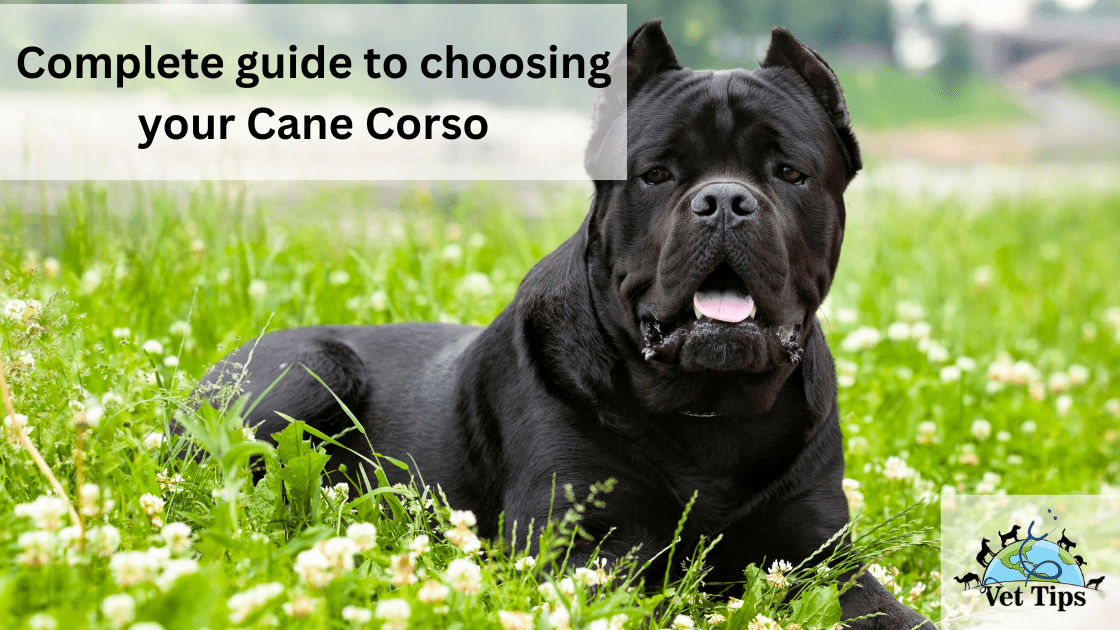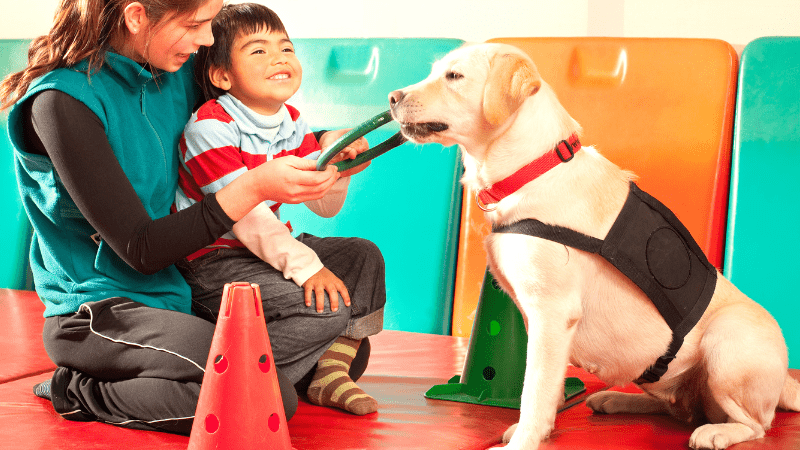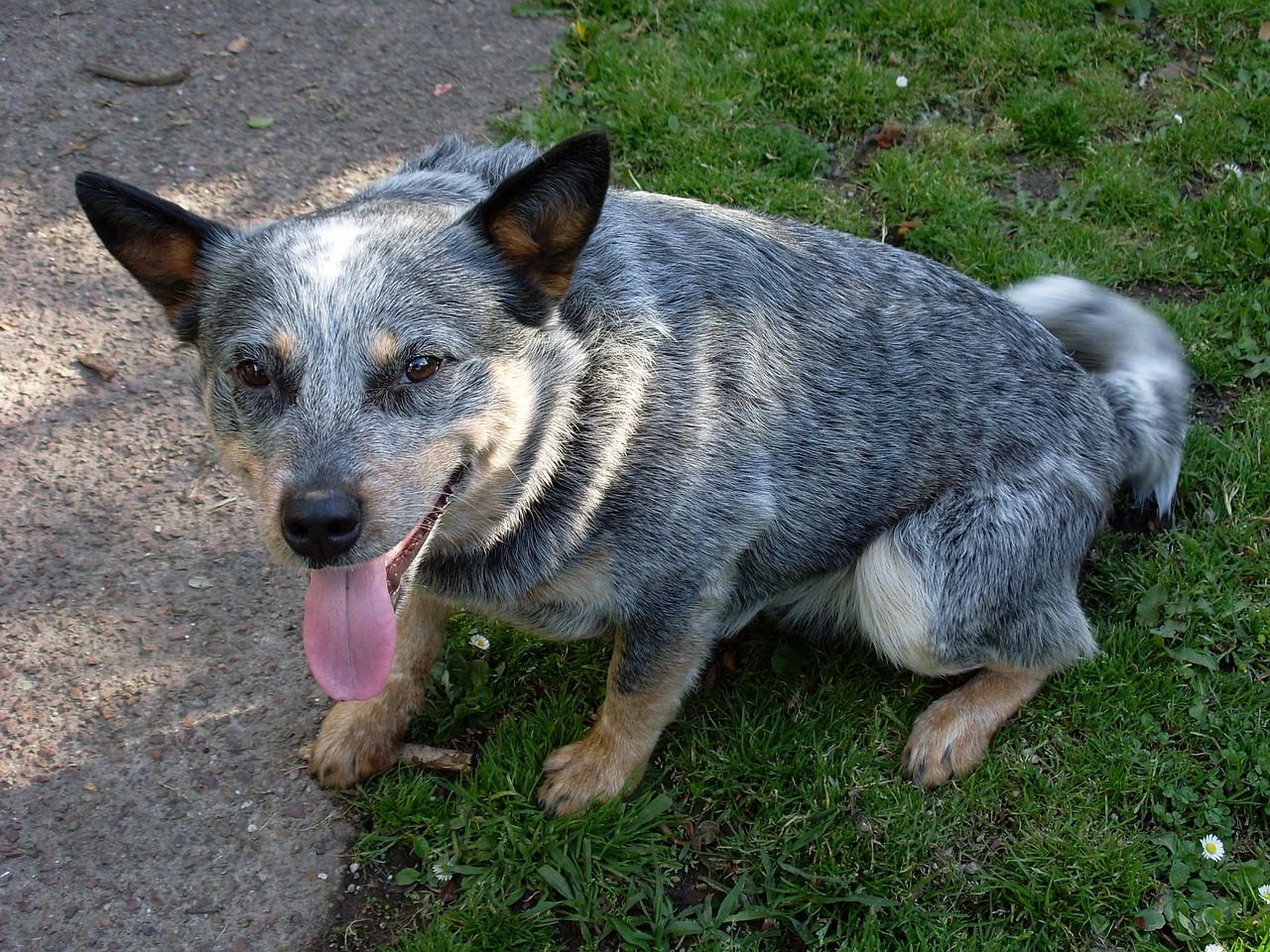In this article, we will discuss, “Complete guide to choosing your Cane Corso”. Continue reading to learn more…
The Cane Corso, commonly known and pronounced as “KAH-Nay KOR-So,” is a large, heavy, muscular dog with a noble and confident disposition. This breed falls in the category of the best large working dogs in the world. Cane Corso is a powerful dog that may seem frightening to some.
These vigilant and fearless dogs are not the right choice for everyone. However, they are often misunderstood and can make excellent canine companions. For people who like the idea of a huge athletic and protective dog, the Cane Corso is one of the top choices.
Breed Characteristics
- Group: Working Dog
- Size:Cane Corso weight is directly proportionate to his height, typically 90 to 125 pounds; height is about 24.5 to 28.5 inches at the shoulder
- Coat type: Cane Corsos have a short, coarse coat.
- Life expectancy/Age: 11 to 13 years
General Characteristics of the Cane Corso
- Affection Level: High
- Friendliness: Medium
- Kid-Friendly: Low
- Pet-Friendly: Medium
- Exercise Needs: High
- Playfulness: Low
- Energy Level: Medium-High
Cane Corso’s History
This large working breed of dog originated in Italy and can be traced back to ancient times. The extinct mastiff-type dog known as a Molossus is considered the ancestor of the Cane Corso. This dog breed also has some gene variation in its gene pool, resembling other mastiff-type dog breeds. So, Cane Corso has varied ancestors. Cane Corso acted as a war dog, guard dog, and skilled hunter of the various game (including massive games). Cane Corso’s name is derived from the Italian word for dog, i.e., Cane, and the Latin word Cohors, which means “guardian” or “protector.”
The significant decline of the Cane Corso dog breed was brought about by World Wars I and II, but small numbers still exist. During the 1970s, Cane Corso enthusiasts revived the species. Cane Corso’s first dog came to the United States in 1988. The breed was inducted into the AKC Miscellaneous category in 2007 and was fully recognized in the AKC Working Group in 2010.
Coat Color
The Corso dog has a stiff, short coat with a light undercoat.
It can be gray, red, black, or fawn and may or may not have a brindle pattern. The skin sheds twice a year heavily, so have a good vacuum cleaner on hand to suck up the dust bunnies.
Cane Corso Care And Grooming
The Corso has a short, coarse coat and is typically usually a heavy shedder. Grooming needs are more than average, and brushing and bathing are required. Like other large dogs, the Corso nails also wear down naturally. So, rare nail trims may be necessary. Check the length of your dog’s nails regularly so it can remain comfortable and mobile.
According to the breed standard, the Cane Corso’s ears are often cropped into an equilateral triangle, but this is not a requirement. The tail docking is typically done at the fourth vertebra if required.
A real working dog, i.e., Cane Corso, is active and driven. Exercising daily will help keep Cane Corso physically and mentally fit. Jogging or walking for at least a mile is a good start. If you don’t have a job for Corso, he can find it himself, dig holes and chew your stuff. If you have a huge farm, the dog can raise cattle. But if you are a typical homeowner, spend time each day learning tricks, playing dog games, or practicing obedience skills.
Cane Corso is not the best option for first-time dog-owners. Instead, they are best for experienced dog owners with exceptional dog training skills. Proper training and socialization are essential for Cane Corso dogs. With a natural hatred of strangers and a tendency to be territorial, you need to be diligent and persistent during training. This is important because of the large size of the dog. Care should be taken to prevent tilting, jumping, and leash pulling of Cane Corso.
Cane Corso is an intelligent and hardworking dog, so learning should not be difficult for this canine companion.
Despite its appearance, which some people may find scary, Cane Corso can be affectionate and gentle. This dog breed is deeply attached to its family and will act as a protector or guardian. With proper handling and training, Cane Corso can treat children better, even form close relationships. However, children should also be taught how to treat dogs and never left alone with them at the start.
Cane Corso needs a robust and high fence when allowed outside. This breed has a high hunting drive and always looking for chasing and killing small animals such as cats and other small dogs. They are very territorial and will patrol the fence line, which protects the property from passersby.
Diet and Nutrition
An adult can Cane Corso needs 5 to 6 cups of Kibble/dry dog food daily. It is better to divide it into two meals to reduce the risk of stomach torsion and bloating. Make sure your dog is gaining weight. If you notice abnormal weight gain, ask your veterinary doctor if you need to change your feeding schedule, type of food, dosage, and exercise routine.
General Health Issues
Responsible and professional dog breeders strive to maintain the highest breeding standards established by kennel clubs such as AKC. Dogs raised by these principles are less likely to inherit a medical condition. However, there may be some hereditary health problems in the breed.
Be aware of the following conditions:
- Ectropion: A ordinary condition in which the lower eyelids roll out or drop.
- Gastric dilatation-volvulus: Bloating is possible after eating and drinking very fast. If the dog’s stomach twists, it can cut off the blood supply and create a medical emergency.
- Hip dysplasia: This is a hereditary condition that can lead to arthritis and lameness.
What is a Blue Cane Corso?
Blue Blood Cane Corso is a hybrid of Alapaha Blue Blood Bulldog and Cane Corso. Both parents’ species are similar in size and temperament. Alapaha roots belong to the English Bulldog, and this dog is used for companionship and security reasons. This dog is known for its incredible loyalty and overprotectiveness for his family.
Pros and Cons of Cane Corso Dog
Pros:
- Excellent with children
- It makes a fantastic watchdog
- Multiple coat color and variation that looks appealing.
- Huge and aggressive dog
- Known as guardian or protector of the family
- Also, serve as a good herding dog
Cons:
- Needs obedience training and significant exercise
- At the risk of hip dysplasia and other joint problems(arthritis) due to its massive size
- Difficult for children and small people to handle him due to his large size
- May looks scary to some people
- Can harm children and people if not trained properly
Conclusion: Points to Remember
- It can be gray, red, black, or fawn and may or may not have a brindle pattern. The skin sheds twice a year heavily, so have a good vacuum cleaner on hand to suck up the dust bunnies.
- Solid fawn and red Corsos may have a gray or black mask.
- If necessary, Cane Corso’s ears may be cropped or cut.
- Cane Corso is a huge working dog that needs a lot of physical and mental work
- The Cane Corso is not a demonstrator, but he enjoys talking to his people with “wow wow” sounds along with snorts and other verbal words.
- Cane Corso is not a good “first dog.” He needs a lot of socialization, training, and exercise to be the right partner.
Click here for the source file.
Click here for similar posts.





One thought on “Complete guide to choosing your Cane Corso”